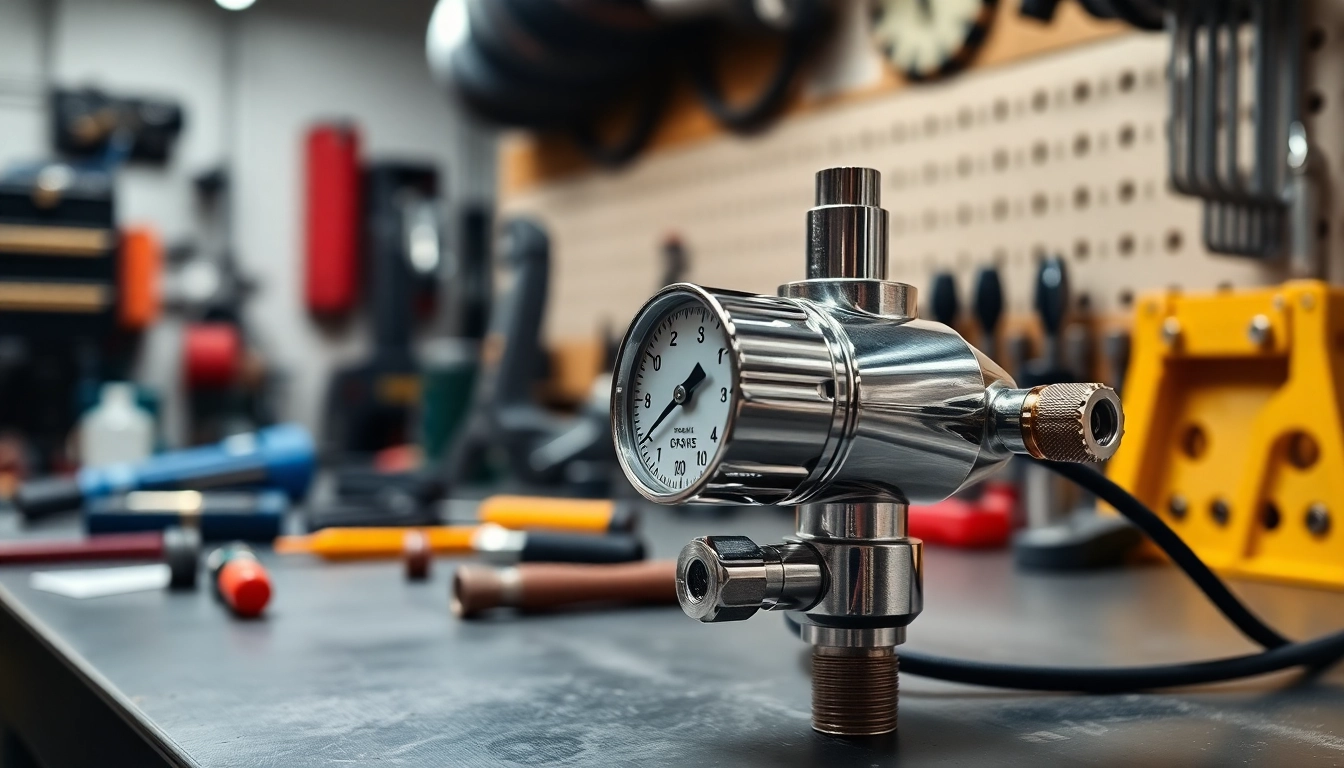
Understanding Nitrogen Regulators
What is a Nitrogen Regulator?
A nitrogen regulator is a crucial device that controls the pressure of nitrogen gas flowing from a cylinder to a variety of applications, ensuring safe and efficient use. Nitrogen is widely employed in numerous industries, including food and beverage, HVAC (heating, ventilation, and air conditioning), and manufacturing. The primary role of a nitrogen regulator is to reduce high-pressure gas from the cylinder to a lower, usable pressure. This makes nitrogen regulators essential tools for operations such as inflating tires, pressure testing refrigeration systems, and even in draft beer systems to create the perfect pour.
How Nitrogen Regulators Work
Nitrogen regulators utilize a diaphragm or piston mechanism to sense the pressure in the cylinder and adjust the gas flow accordingly. When pressure decreases in the system, the regulator automatically opens to allow more gas to flow. This dynamic balancing act ensures that applications receive a consistent supply of nitrogen, crucial for maintaining operational efficiency and product integrity.
The operational parameters of a nitrogen regulator include:
- Inlet Pressure: The pressure within the nitrogen gas cylinder, typically ranging from 2000 to 3000 PSI.
- Outlet Pressure: The adjusted pressure delivered to the system, which can vary based on specific application requirements.
- Flow Rate: Measured in liters per minute, flow rate refers to the volume of gas the regulator can deliver.
Common Applications of Nitrogen Regulators
Nitrogen regulators are used in a diverse array of applications:
- HVAC Systems: They are utilized to pressure test and diagnose leaks in HVAC and refrigeration systems.
- Food and Beverage Industry: Nitrogen is used in these industries to preserve the quality and freshness of products, with regulators ensuring optimal dispensing pressures for soft drinks and pastries.
- Manufacturing Processes: Nitrogen is commonly employed in manufacturing to create an inert atmosphere, particularly in welding and metal processing.
- Laboratories: In laboratory settings, nitrogen regulators are vital for experiments requiring inert atmospheres to prevent chemical reactions and contamination.
Choosing the Right Nitrogen Regulator
Key Features to Consider
When selecting a nitrogen regulator, several key features must be analyzed:
- Pressure Range: Ensure the regulator meets the specific pressure requirements for your application.
- Material Construction: Choose regulators made from durable materials, such as brass or stainless steel, suitable for high pressures and resistant to corrosion.
- Connection Type: Identify the inlet connection type to ensure compatibility with your nitrogen cylinder.
- Gauge Accuracy: Look for precise gauges that allow for easy monitoring of pressure levels.
High vs. Low-Pressure Nitrogen Regulators
Nitrogen regulators are broadly categorized into high-pressure and low-pressure regulators. High-pressure regulators are designed to manage inflow from cylinders with pressures greater than 2000 psi. These are commonly used for industrial applications. In contrast, low-pressure regulators typically manage pressures below 60 psi, ideal for applications requiring moderate gas flows, such as in food and beverage dispensing systems.
Top Brands and Their Products
Various manufacturers lead the nitrogen regulator market, each providing unique products tailored to specific needs:
- Victor: Known for reliability and craftsmanship, Victor regulators often cater to welding and industrial applications.
- Smith: Offers high-performance nitrogen regulators with precise pressure control suitable for multiple applications.
- Unibead Products: This brand focuses on compact designs, perfect for systems dealing with soft drink dispensing.
- McMaster-Carr: Features an extensive selection of nitrogen regulators allowing users to choose from various styles and sizes.
Installation and Maintenance Tips
Step-by-Step Installation Guide
Proper installation is vital for the effective operation of nitrogen regulators. Follow these steps:
- Check Compatibility: Ensure that your regulator is compatible with the nitrogen cylinder’s connection type.
- Inspect the Equipment: Before installation, examine the regulator for any signs of damage or defects.
- Attach the Regulator: Securely connect the regulator to the cylinder, ensuring not to over-tighten, which can lead to cracks.
- Set the Desired Pressure: Adjust the pressure setting on the regulator according to your application needs.
- Test for Leaks: Use soapy water around the connections and monitor for bubbles indicating a leak.
Regular Maintenance Practices
To ensure the longevity and reliability of nitrogen regulators, implement a regular maintenance routine:
- Pressure Testing: Regularly test your regulator’s pressure settings to ensure they remain accurate.
- Visual Inspections: Routinely check for signs of wear, corrosion, or damage to the regulator and its fittings.
- Cleansing the Gauges: Keep the gauges clean and free from debris to maintain visibility and functionality.
- Professional Servicing: Schedule annual servicing with a qualified technician to ensure peak performance.
Diagnosing Common Issues
Despite proper maintenance, users may encounter issues with nitrogen regulators. Here are common problems and solutions:
- Inconsistent Pressure: Check for leaks at the connections and ensure the internal components are not blocked or damaged.
- Low Flow Rate: Inspect hoses for kinks or obstructions, and verify the regulator’s settings are correctly adjusted.
- Gauges Not Reading Accurate Pressure: This could indicate gauge failure; consider replacing the gauge if it consistently fails to calibrate correctly.
Comparing Different Types of Nitrogen Regulators
Single vs. Dual Outlet Regulators
Nitrogen regulators come in two common formats: single outlet and dual outlet regulators. Single outlet regulators provide nitrogen to one application at a time, making them cost-effective for basic needs. Dual outlet regulators, on the other hand, can simultaneously supply two applications, offering greater flexibility and efficiency in industrial settings.
Specialty Nitrogen Regulators Explained
Specialty nitrogen regulators are tailored for specific uses, such as:
- Beer Dispensing: Designed to maintain optimal pressure for nitrogen-infused beer, preventing flat pours.
- HVAC Applications: Specialized regulators that withstand higher pressures and provide precise flow for testing systems.
Factors Influencing Performance
Several factors can impact the performance of nitrogen regulators:
- Temperature: Environmental conditions can affect the regulator’s operation; cold temperatures may decrease flow rates.
- Gas Purity: Using high-purity nitrogen is crucial to prevent contamination that can impede performance.
- Component Wear: Regular wear and tear can affect performance, making regular inspections necessary.
Seeking Help and Resources
Where to Buy Nitrogen Regulators
Identifying a reliable supplier is critical for acquiring high-quality nitrogen regulators. Options include:
- Local Suppliers: Many local welding and industrial supply stores carry nitrogen regulators.
- Online Retailers: Websites like nitrogen regulator pages allow convenient purchasing with various options available.
Customer Support and Returns
Before purchasing, confirm the vendor’s customer support policies, including return, exchange, and warranty procedures. Good customer service can save time and cost when unexpected issues arise.
Online Forums and Expert Advice
Communities on platforms like Reddit and specialized forums can provide invaluable insight and advice. Engaging with industry professionals and enthusiasts can help solve unique problems and enhance understanding of the intricate workings of nitrogen regulators.






